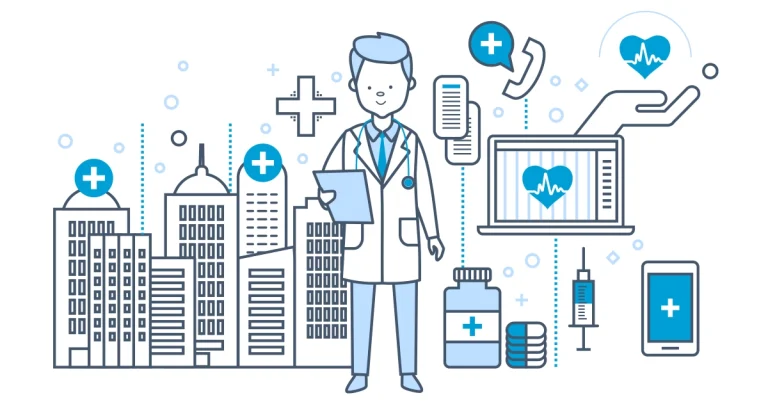Practical Guide to Managing Migraines: Daily Habits and Treatment Options
Practical Guide to Managing Migraines: Daily Habits and Treatment Options
Migraines affect approximately 2.7 million Canadians, with many experiencing debilitating symptoms that disrupt work, family life, and overall wellbeing. These aren’t merely “bad headaches” – they’re complex neurological events that can significantly impact quality of life. At Care& Family Health, we regularly see patients struggling to manage these challenging episodes while maintaining their daily responsibilities.
Understanding how to effectively manage migraines involves more than just reaching for medication when pain strikes. A comprehensive approach includes identifying triggers, implementing preventive strategies, and knowing when and how to treat symptoms. This guide aims to provide practical, evidence-based strategies for migraine management that you can discuss with your healthcare provider.
Understanding Migraines: More Than Just a Headache
Migraines are neurological events characterized by moderate to severe pulsating headaches, often accompanied by nausea, vomiting, and sensitivity to light and sound. For many sufferers, migraines begin with warning signs known as “aura” – visual disturbances like flashing lights, zigzag lines, or temporary blind spots.
What sets migraines apart from regular headaches is their underlying neurobiology. Research suggests that migraines involve changes in brain chemicals, particularly serotonin, which regulates pain in the nervous system, and calcitonin gene-related peptide (CGRP), which plays a role in pain transmission and inflammation.
Common Migraine Triggers
Identifying and managing triggers is often the first step in reducing migraine frequency. While triggers vary widely between individuals, these are among the most common:
Environmental Factors
- Weather changes (barometric pressure fluctuations)
- Bright or flickering lights
- Strong smells (perfumes, cleaning products)
- Excessive noise
Dietary Triggers
- Alcohol (especially red wine and beer)
- Caffeine (both consumption and withdrawal)
- Aged cheeses and processed meats containing nitrates
- MSG and artificial sweeteners
- Skipped meals and dehydration
Lifestyle Factors
- Disrupted sleep patterns
- High stress levels
- Physical exertion
- Screen time and eye strain
Hormonal Influences
- Menstrual cycle fluctuations
- Hormonal medications
- Pregnancy and perimenopause
Keeping a detailed migraine diary can help identify your specific triggers. Note the time and circumstances surrounding each migraine, including food consumed, sleep quality, stress levels, and environmental factors. Over time, patterns may emerge that help you understand your unique trigger profile.
Daily Habits That Can Reduce Migraine Frequency
Implementing consistent lifestyle habits can significantly reduce the frequency and severity of migraines. These preventive measures work by creating stability in the body systems that impact migraine activity.
Establish Consistent Sleep Patterns
Poor sleep quality and irregular sleep schedules are known migraine triggers. Aim for 7-9 hours of quality sleep each night by:
- Going to bed and waking at the same time daily (even weekends)
- Creating a relaxing bedtime routine
- Keeping your bedroom dark, quiet, and cool
- Limiting screen time before bed to reduce blue light exposure
- Avoiding caffeine after mid-afternoon
Develop Regular Eating Patterns
Blood sugar fluctuations can trigger migraines in susceptible individuals. Stabilize your levels by:
- Eating meals at consistent times
- Never skipping meals, especially breakfast
- Including protein with each meal to stabilize blood sugar
- Carrying healthy snacks for times when meals might be delayed
- Gradually eliminating potential food triggers
Stay Hydrated
Dehydration is a common migraine trigger that’s easily preventable:
- Aim for 2-3 liters of water daily
- Increase intake during hot weather or exercise
- Limit dehydrating beverages like alcohol and caffeine
- Consider using a hydration tracking app or marked water bottle
- If plain water is unappealing, try herbal teas or water infused with fruits
Manage Stress Effectively
Stress is among the most commonly reported migraine triggers. Incorporate regular stress management techniques:
- Practice mindfulness meditation for 10-15 minutes daily
- Try progressive muscle relaxation during high-stress periods
- Schedule brief “worry breaks” rather than ruminating throughout the day
- Use breathing exercises when feeling overwhelmed
- Consider cognitive behavioral therapy (CBT) for chronic stress
Regular Physical Activity
Moderate, regular exercise can reduce migraine frequency by:
- Reducing stress
- Improving sleep quality
- Releasing endorphins (natural pain relievers)
- Improving overall circulation
Start with low-impact activities like walking, swimming, or cycling, gradually increasing intensity. Be aware that very strenuous exercise can sometimes trigger migraines in some individuals, so find your personal threshold.
Limit Screen Time and Practice Eye Care
Digital eye strain can contribute to headaches and migraines:
- Follow the 20-20-20 rule: every 20 minutes, look at something 20 feet away for 20 seconds
- Consider blue light filtering glasses or screen filters
- Ensure proper lighting when using screens
- Maintain proper posture to reduce neck and shoulder tension
- Schedule regular eye exams to address vision changes
Effective Treatment Options
When preventive measures aren’t enough, various treatment options can help manage migraine symptoms. Treatment approaches generally fall into two categories: acute treatments for stopping attacks in progress and preventive treatments for reducing frequency and severity.
Acute Treatments
Over-the-Counter Options:
- Nonsteroidal anti-inflammatory drugs (NSAIDs) like ibuprofen or naproxen sodium
- Acetaminophen
- Combination medications containing caffeine, aspirin, and acetaminophen
These work best when taken at the first sign of migraine, before pain becomes severe.
Prescription Options:
- Triptans (such as sumatriptan, rizatriptan): Specifically designed for migraines, these medications constrict blood vessels and block pain pathways in the brain
- Anti-nausea medications for associated symptoms
- Ergot derivatives (used less commonly due to side effects)
- Gepants: A newer class of medications that block CGRP, a protein involved in migraine pain
- Ditans: Another newer option that works differently from triptans
Non-Medication Approaches:
- Cold or hot compresses
- Resting in a dark, quiet room
- Pressure application to painful areas
- Consuming a small amount of caffeine (if withdrawal is a trigger)
Preventive Treatments
For those with frequent migraines (typically more than four per month), preventive treatment may be recommended:
Medication Options:
- Beta-blockers (such as propranolol)
- Antidepressants (amitriptyline, venlafaxine)
- Anti-seizure drugs (topiramate, valproate)
- CGRP monoclonal antibodies (newer injectable medications specifically designed for migraine prevention)
- Botox injections (for chronic migraine)
Non-Medication Preventive Approaches:
- Acupuncture
- Biofeedback therapy
- Cognitive behavioral therapy
- Nerve stimulation devices
- Regular exercise and stress management
- Supplements like magnesium, riboflavin (vitamin B2), and CoQ10 (discuss with a healthcare provider first)
Developing Your Personalized Migraine Management Plan
Managing migraines effectively typically requires a personalized approach developed with a healthcare provider. At Care& Family Health, our Nurse Practitioners work with patients to create comprehensive management plans that address both prevention and treatment.
Key Components of a Migraine Management Plan:
- Trigger identification and avoidance strategies
- Lifestyle modifications tailored to your specific triggers
- Appropriate acute medications with clear instructions on when and how to use them
- Preventive treatments if needed
- Non-pharmaceutical approaches
- Regular follow-up to assess effectiveness and make adjustments
Having unrushed medical appointments is particularly important for migraine management, as developing an effective plan often requires detailed discussions about symptoms, triggers, and response to treatments. Healthcare providers at Care& take the time to thoroughly understand each patient’s migraine pattern, ensuring that treatment recommendations are tailored to individual needs.
When to Seek Medical Care
While most migraines can be managed at home once you have an established treatment plan, certain situations warrant prompt medical attention:
Seek Emergency Care If You Experience:
- First severe headache of your life, especially with sudden onset
- Headache accompanied by fever, stiff neck, confusion, seizures, double vision, weakness, numbness, or difficulty speaking
- Headache after a head injury
- Headache that worsens despite rest and medication
Schedule a Medical Appointment If:
- Your headache pattern changes or worsens
- Treatments that once worked are no longer effective
- Your migraines are disrupting your quality of life
- You need to use acute headache medications more than 10 days per month
- You’re experiencing medication side effects
Canadian Resources for Migraine Support
Living with migraines can sometimes feel isolating, but numerous Canadian resources are available:
- Migraine Canada: Provides education, support, and advocacy
- The Canadian Headache Society: Offers professional resources and patient information
- CEFALY Canada: Information about Health Canada-approved neuromodulation devices
- Provincial health programs that may offer coverage for specialized treatments
Additionally, many employers offer health insurance that covers migraine treatments, and community health programs throughout Toronto often provide support for chronic pain conditions including migraines.
Digital Tools for Migraine Management
Technology can be a valuable ally in managing migraines. Consider these digital approaches:
Migraine Tracking Apps:
- Apps like Migraine Buddy, N1-Headache, or Migraine Coach allow detailed tracking of triggers, symptoms, and medication effectiveness
- Some apps can even predict potential migraine attacks based on tracked patterns or weather changes
Telemedicine Services:
- Virtual appointments with healthcare providers can be particularly valuable for migraine patients during attacks when travel may be difficult
- Through telehealth services, healthcare providers can adjust treatment plans, renew prescriptions, and provide guidance without requiring in-person visits
Wearable Technology:
- Certain smartwatches and fitness trackers can help monitor sleep quality, stress levels, and other metrics relevant to migraine management
- Some devices specifically designed for migraine relief use electrical or magnetic stimulation to reduce pain
At Care& Family Health, patients can access their complete medical records through our secure mobile app, making it easier to track migraine patterns and share detailed information with healthcare providers during appointments. This continuity of care is essential for effective migraine management.
The Workplace and Migraines
Migraines can significantly impact work performance, with research showing that presenteeism (being at work but functioning at reduced capacity due to symptoms) is even more common than absenteeism among migraine sufferers.
Creating a Migraine-Friendly Workplace:
- Discuss accommodations with your employer, such as adjustable lighting, screen filters, or flexible scheduling during migraine episodes
- Keep rescue medication at work when possible
- Identify a quiet space where you can take short breaks if prodromal symptoms appear
- Consider discussing your condition with close colleagues so they understand when you need support
- For employers, workplace wellness programs that address stress management and ergonomics can benefit migraine sufferers
For Toronto businesses interested in supporting employee health, Care& offers corporate health services that can help address chronic conditions like migraines through workplace wellness initiatives and accessible healthcare options.
Pregnancy, Hormones, and Migraines
Hormonal fluctuations significantly impact migraines, particularly for women. Understanding this relationship can help with management:
Menstrual Migraines:
- Approximately 60% of women with migraines report attacks associated with their menstrual cycle
- These are typically related to dropping estrogen levels before menstruation
- Short-term preventive treatment can be used specifically around periods
- Tracking cycles alongside migraines can help identify patterns
Pregnancy:
- Many women experience improvement in migraines during pregnancy, particularly in the second and third trimesters
- Some migraine medications are contraindicated during pregnancy, requiring adjusted treatment plans
- Working with healthcare providers who specialize in women’s health is important for managing migraines during pregnancy
Perimenopause and Menopause:
- Hormonal fluctuations during perimenopause can temporarily worsen migraines
- After menopause, many women experience improvement
- Hormone replacement therapy affects migraines differently for different women
At Care& Family Health, our Nurse Practitioners have expertise in women’s health and can provide guidance on managing migraines throughout hormonal transitions.
Conclusion: A Comprehensive Approach to Migraine Management
Effective migraine management requires a multifaceted approach that addresses prevention, prompt treatment, and lifestyle adjustments. While migraines can be challenging, implementing the strategies outlined in this guide can significantly reduce their impact on your quality of life.
Remember that finding the right combination of preventive measures and treatments often takes time and patience. Working with healthcare providers who take the time to understand your unique migraine pattern is essential. Care& Family Health’s approach of offering unrushed appointments with Nurse Practitioners provides an ideal setting for developing personalized migraine management plans.
By combining consistent daily habits, appropriate medications, stress management techniques, and regular healthcare monitoring, most people with migraines can experience significant improvement in both the frequency and severity of attacks.
Frequently Asked Questions About Migraines
Can migraines be completely cured?
While there is currently no permanent cure for migraines, many people achieve significant improvement or even complete control of symptoms through a combination of trigger avoidance, lifestyle modifications, and appropriate medications. The goal of treatment is to minimize frequency and severity of attacks while reducing their impact on quality of life.
How can I tell if my headache is a migraine or something else?
Migraines typically involve moderate to severe pulsating pain, often on one side of the head, accompanied by nausea, sensitivity to light and sound, or visual disturbances. They typically last between 4-72 hours if untreated. Regular headaches are usually less severe, affect both sides, and aren’t accompanied by these additional symptoms. If you’re experiencing recurring headaches, a healthcare provider can help determine the specific type.
What should I do if over-the-counter medications aren’t helping my migraines?
If over-the-counter medications aren’t providing relief, it’s time to consult with a healthcare provider. At Care& Family Health, our Nurse Practitioners can assess your migraine pattern and recommend prescription medications specifically designed for migraines. These specialized treatments are often more effective than general pain relievers and can be part of a comprehensive management plan.
Can children get migraines, and how are they treated?
Yes, children can experience migraines, though their symptoms may differ from adults. Pediatric migraines often involve abdominal pain, nausea, and vomiting more prominently than head pain. Treatment focuses on lifestyle factors like regular sleep, meals, hydration, and stress management, with medications used more cautiously than in adults. Care& offers pediatric care that includes management of conditions like migraines in children and adolescents.
Is it possible to develop migraines later in life if I’ve never had them before?
Yes, migraines can begin at any age, though they most commonly start during adolescence or early adulthood. New-onset headaches in middle age or later should always be evaluated by a healthcare provider to rule out secondary causes. Factors like stress, hormonal changes, or certain medications can trigger migraines in people who haven’t previously experienced them.
Less Wait Time, More Face Time
Visit www.careand.ca to register
Contact Information:
📞 Phone: +1-647-951-4770
📧 Email: helpdesk@careand.ca
🌐 Website: www.careand.ca
Disclaimer:
This article is for informational purposes only and does not constitute medical advice. Always consult with a qualified healthcare provider for personal medical guidance. The information provided is general in nature and may not apply to individual circumstances.







